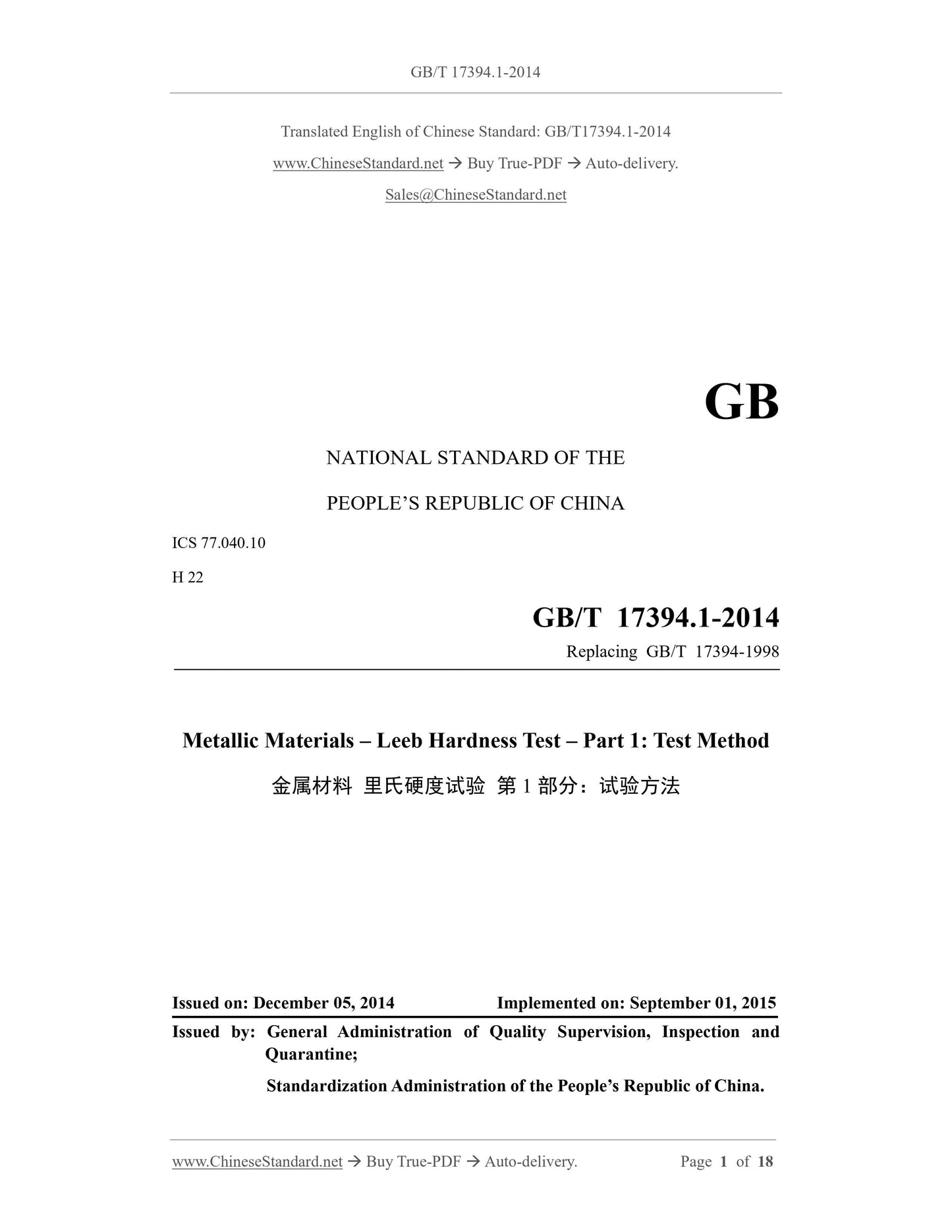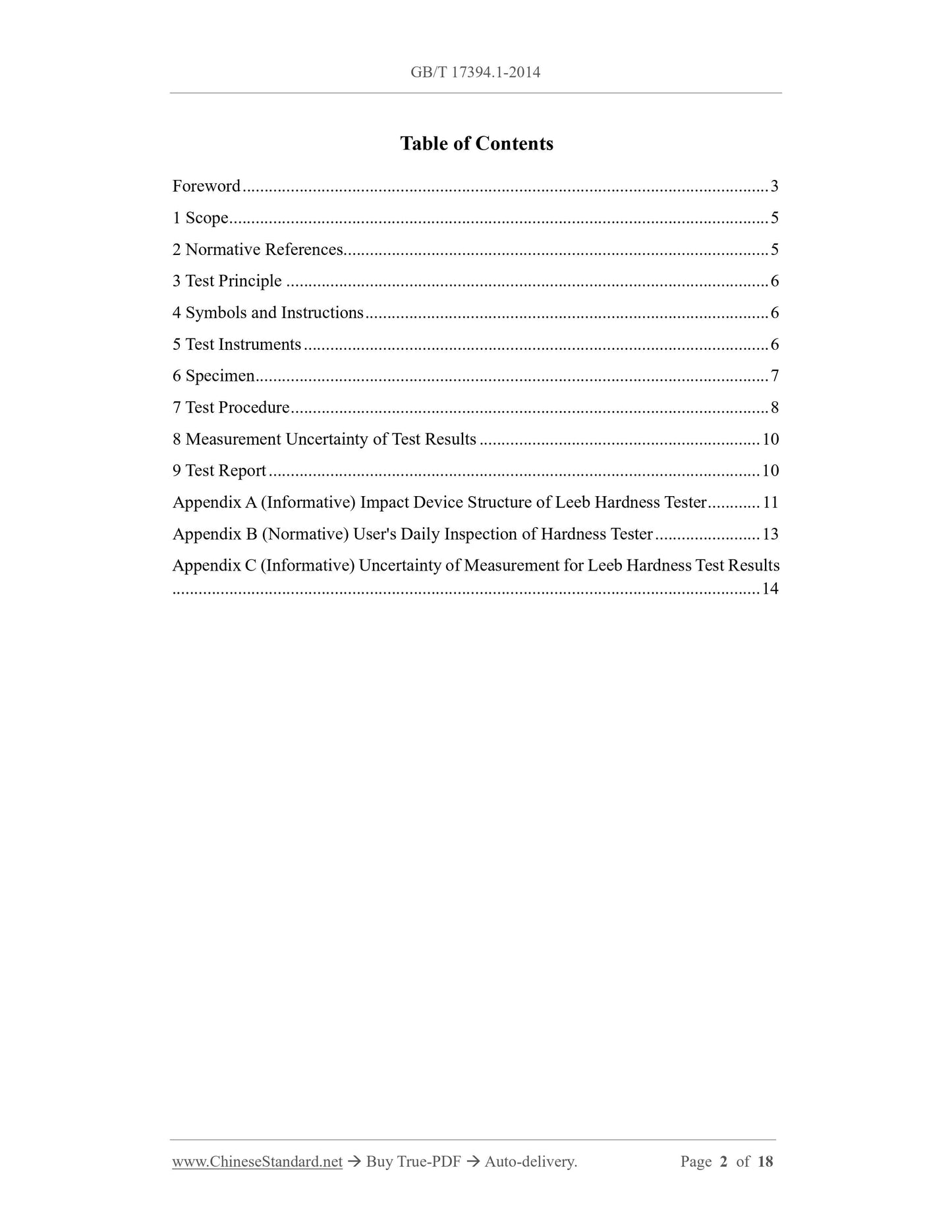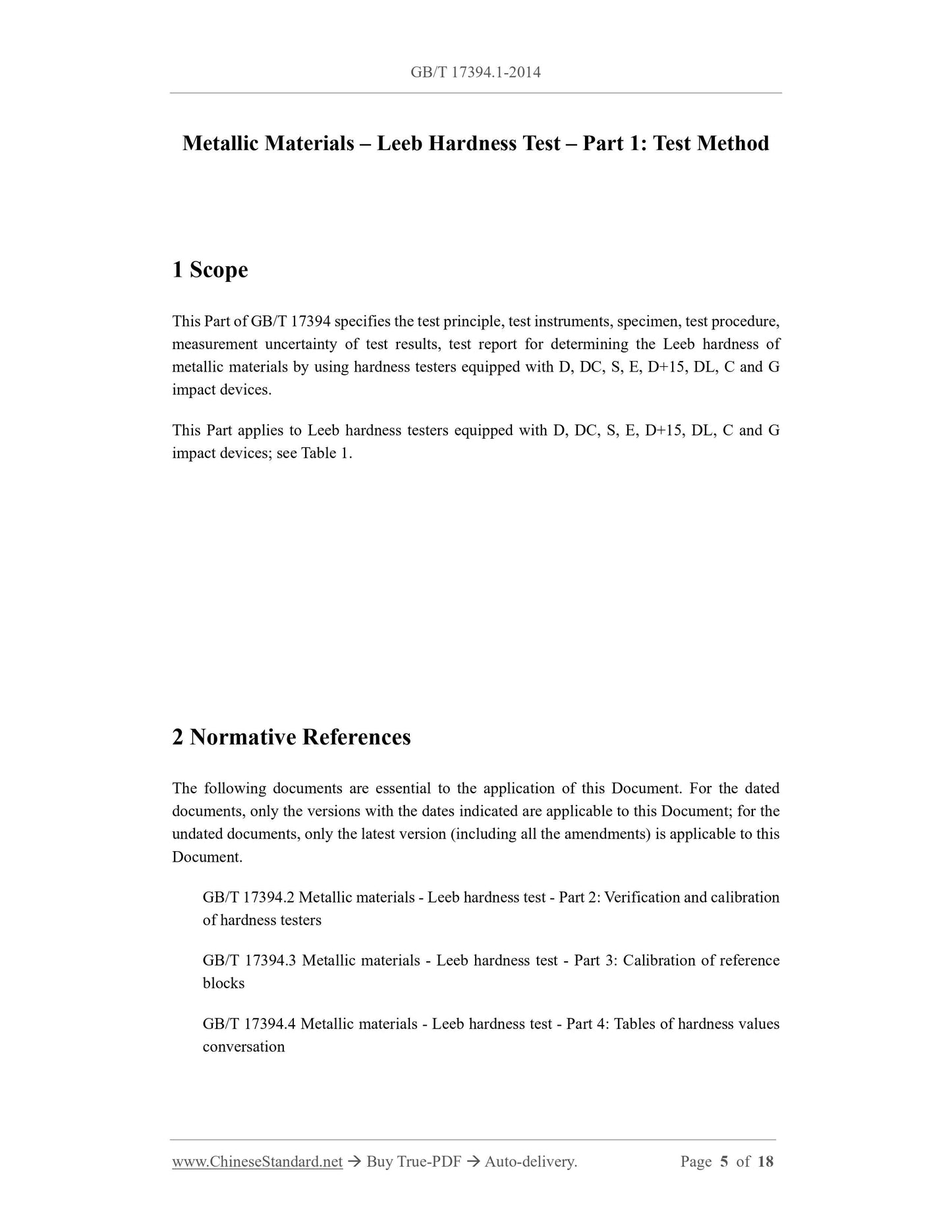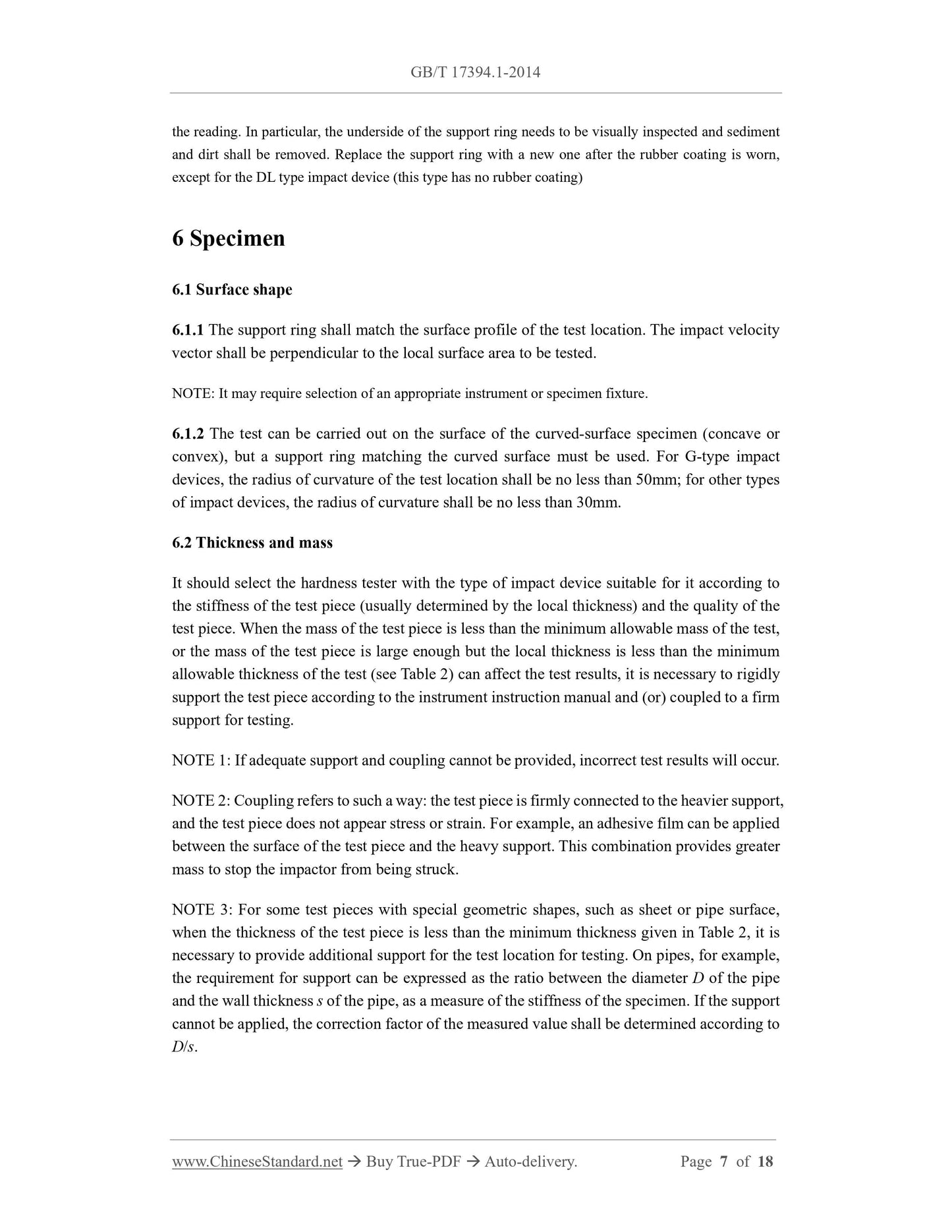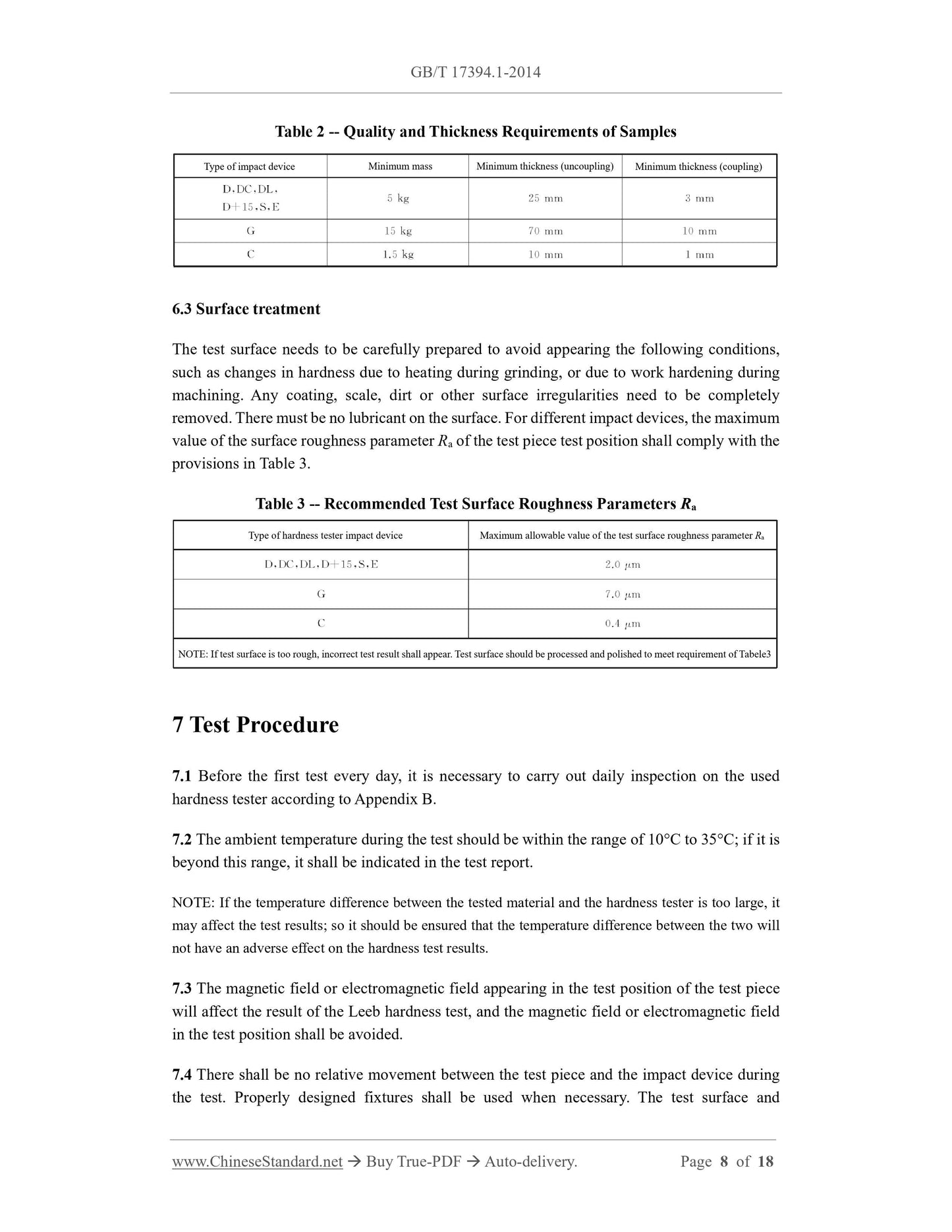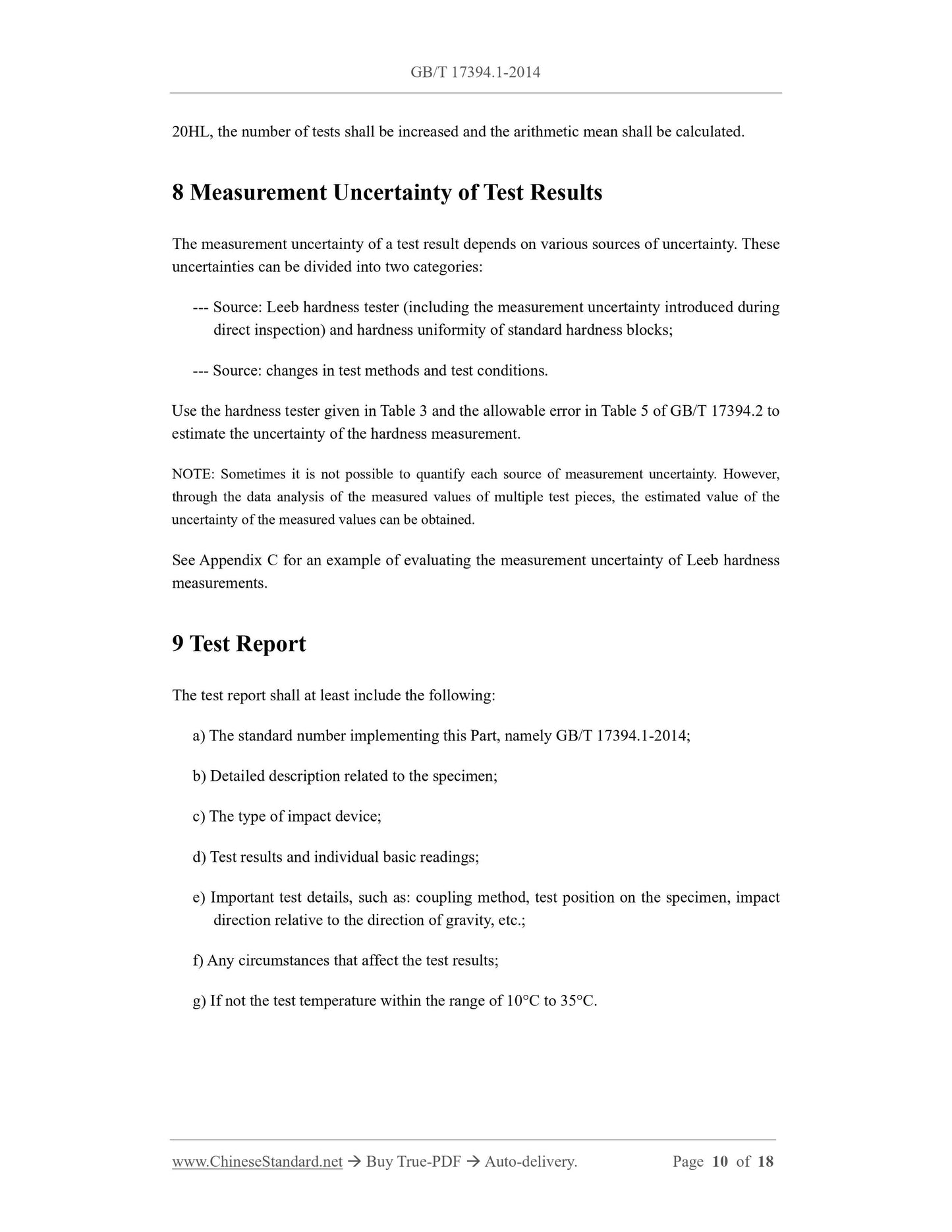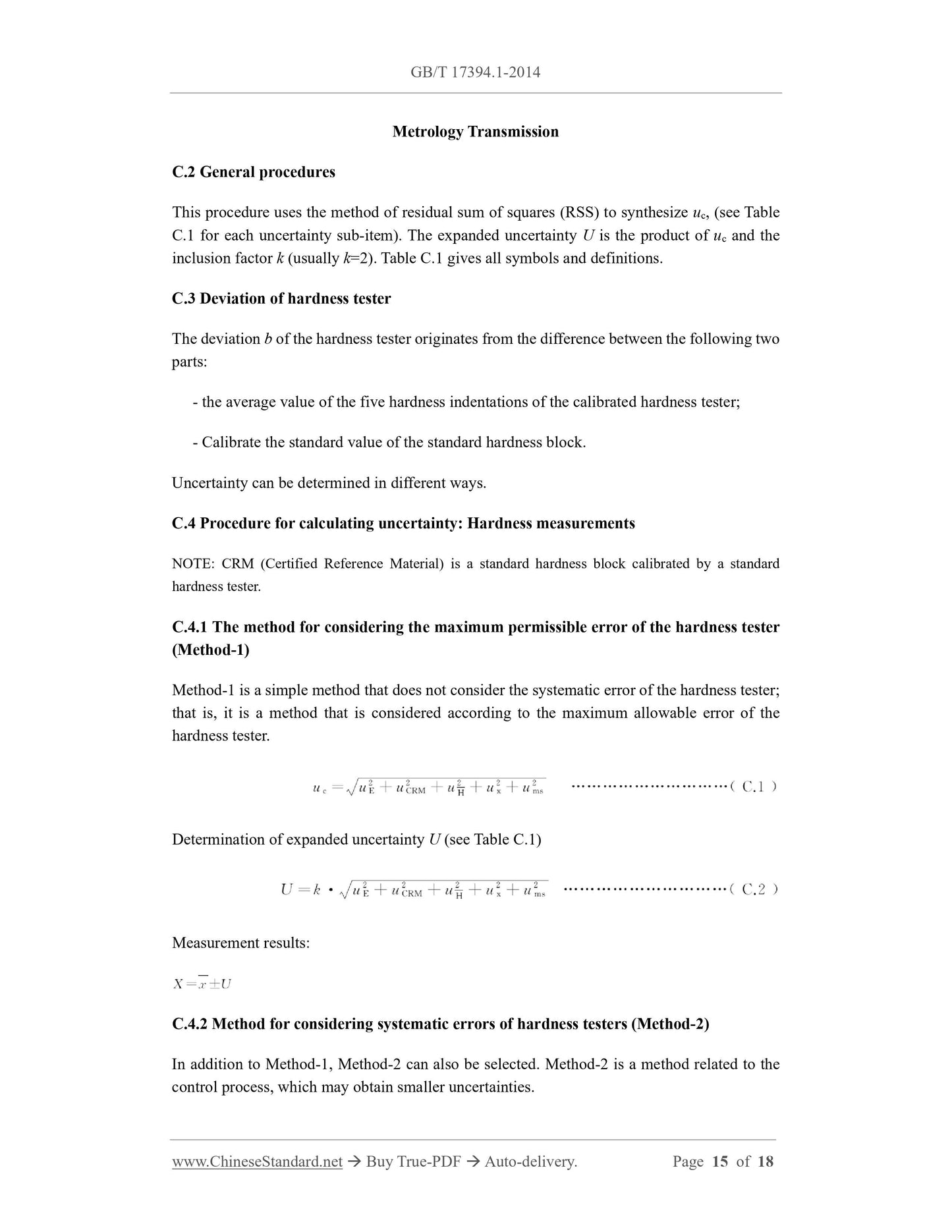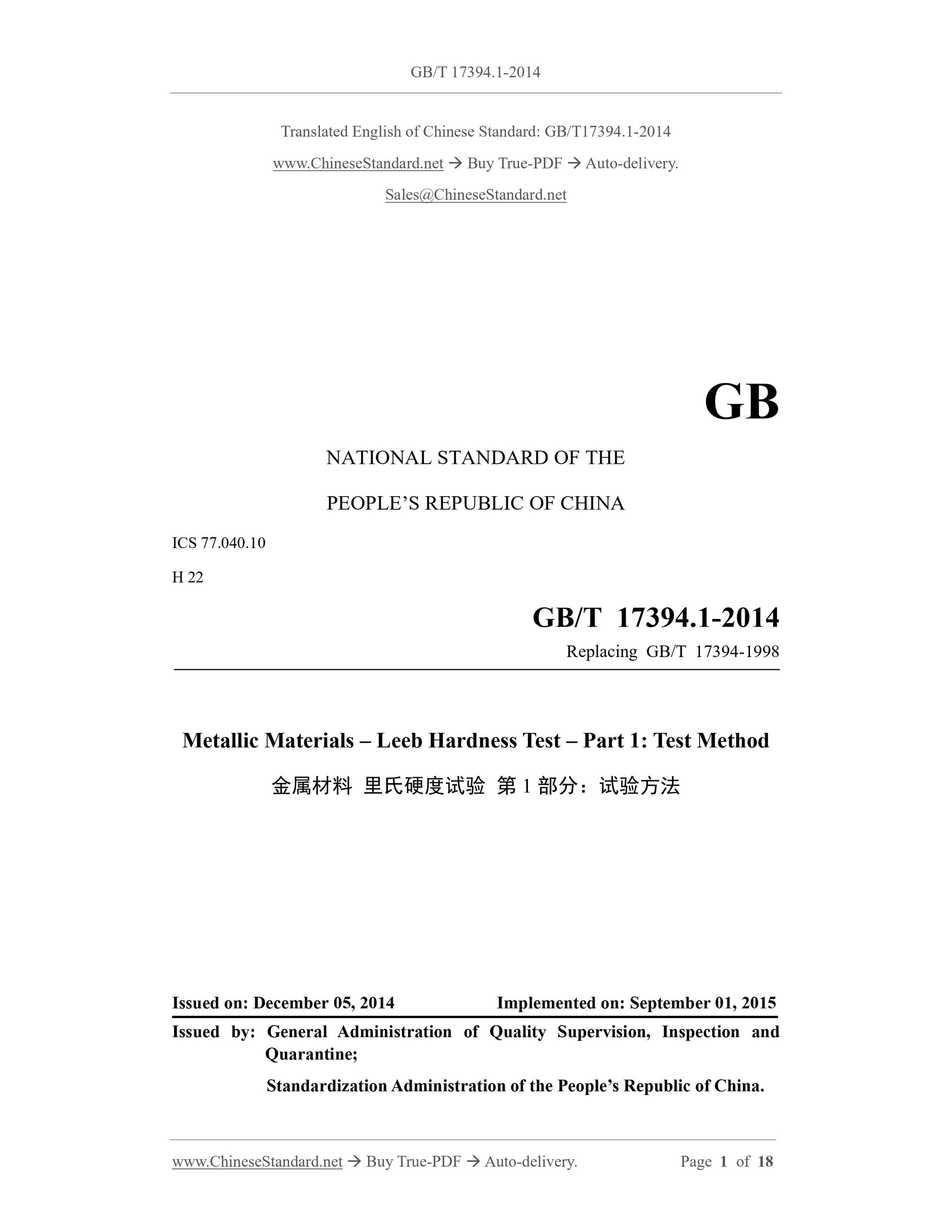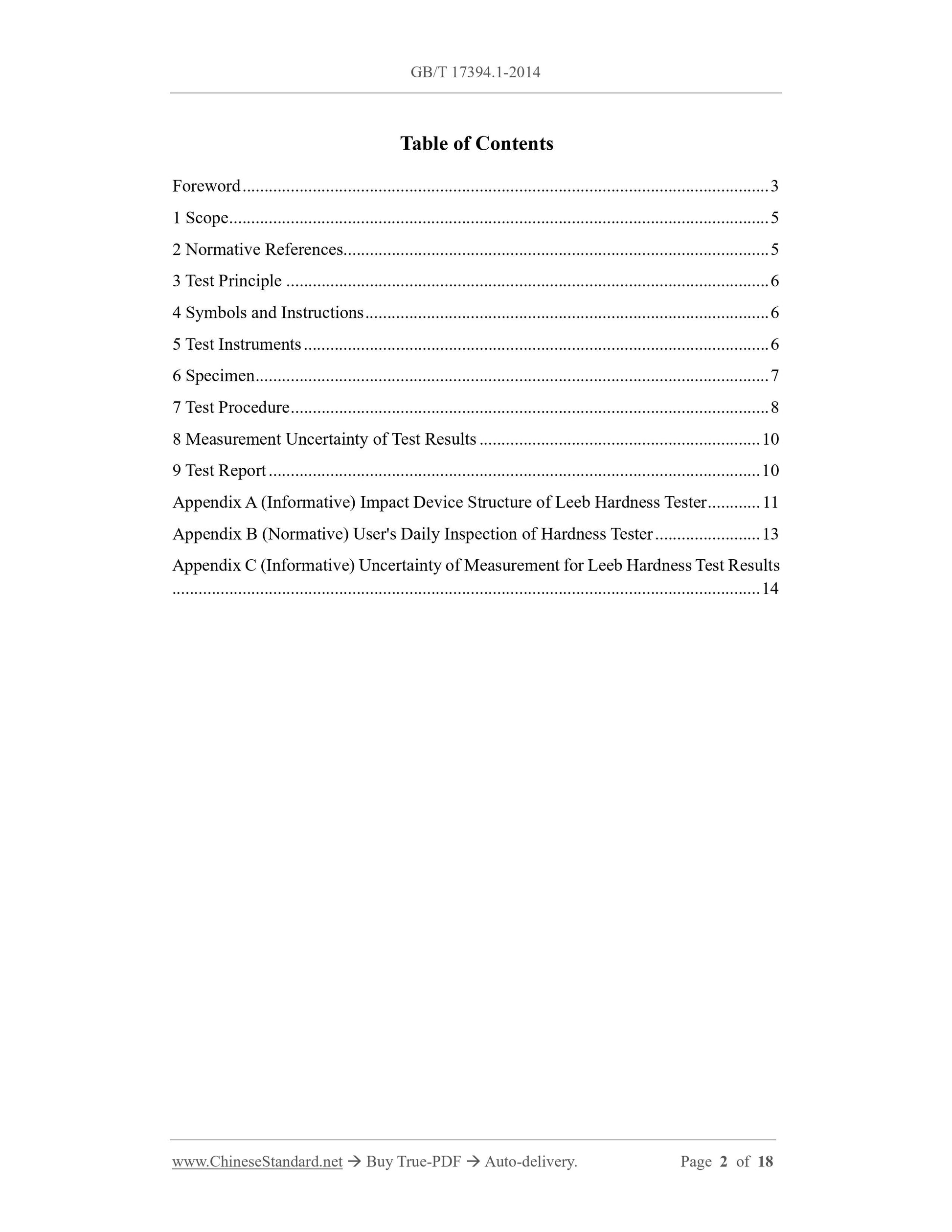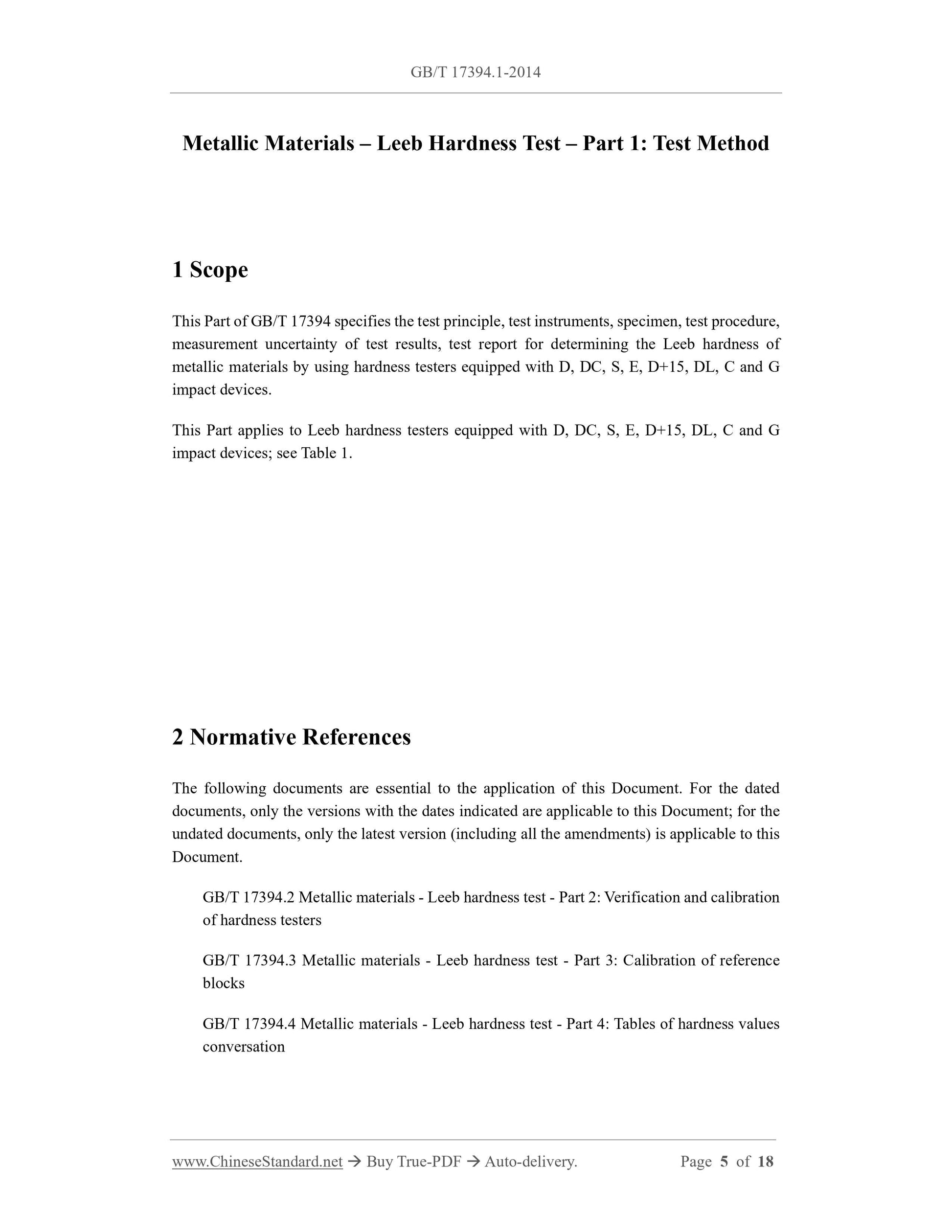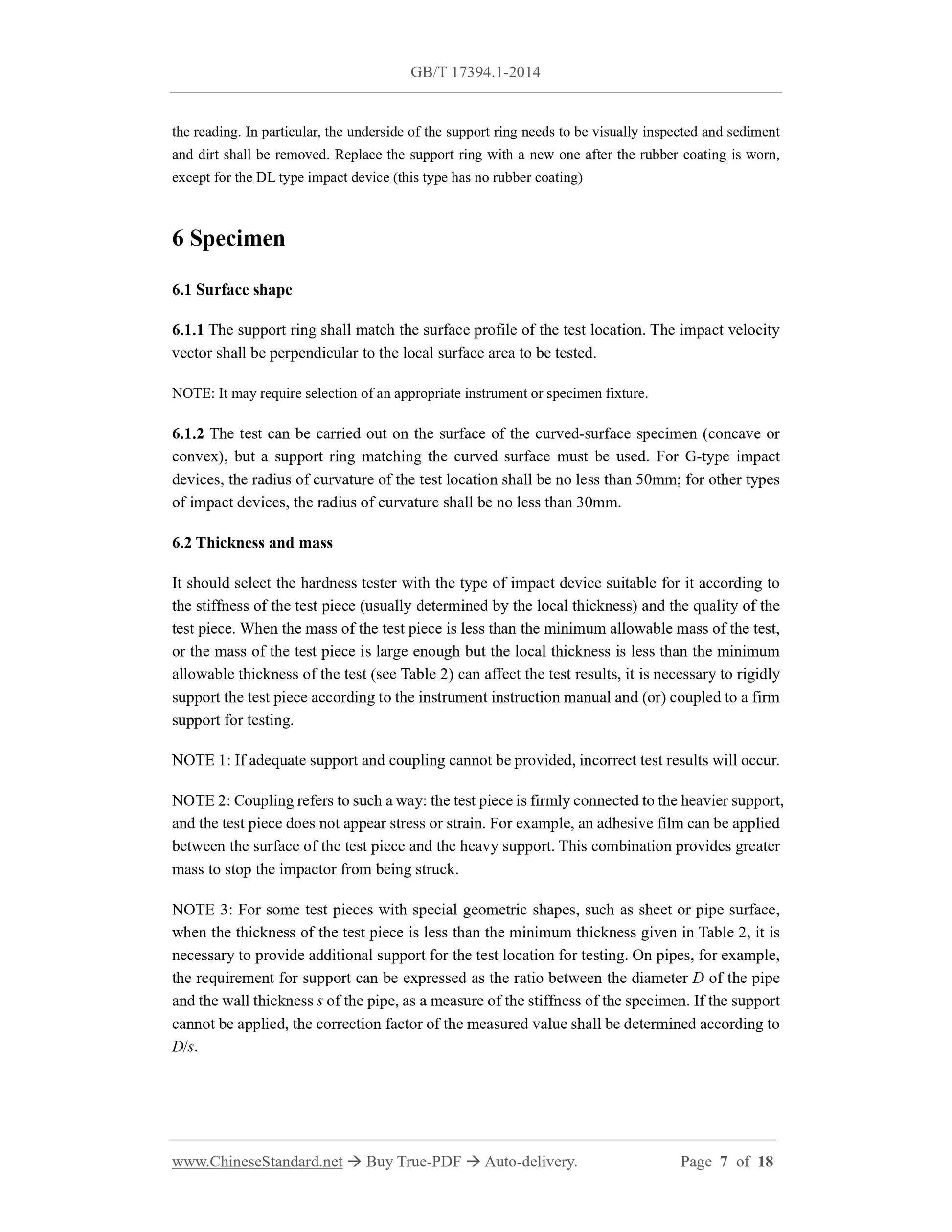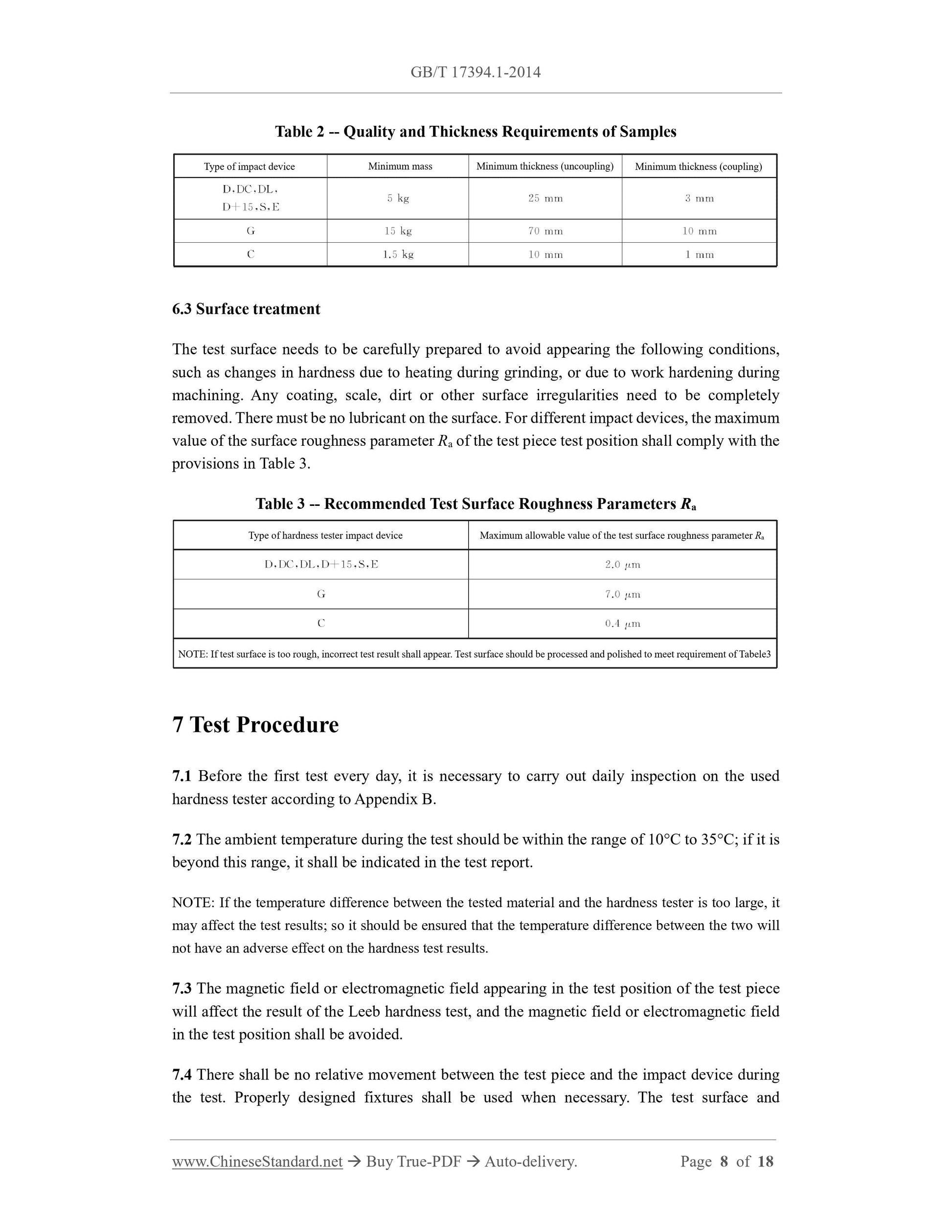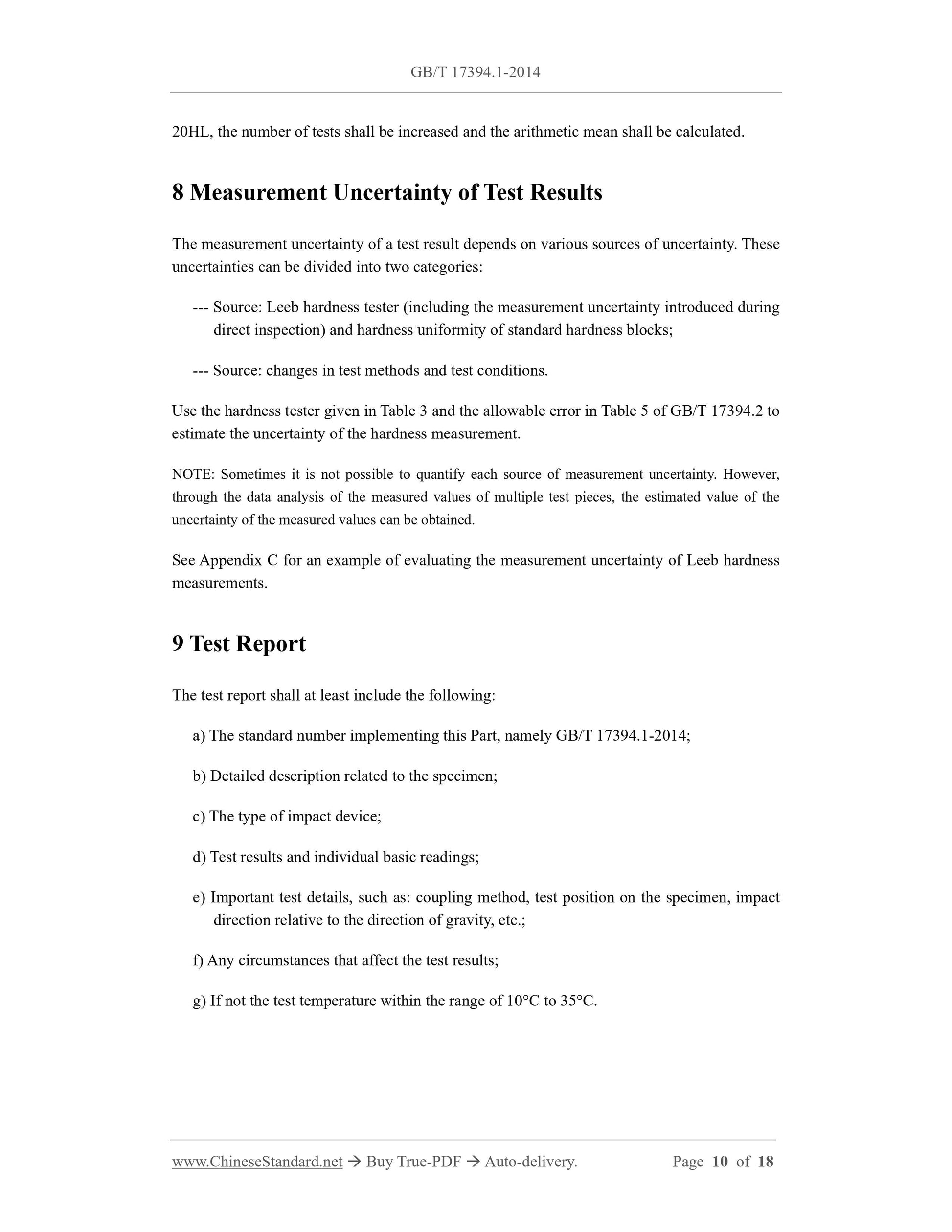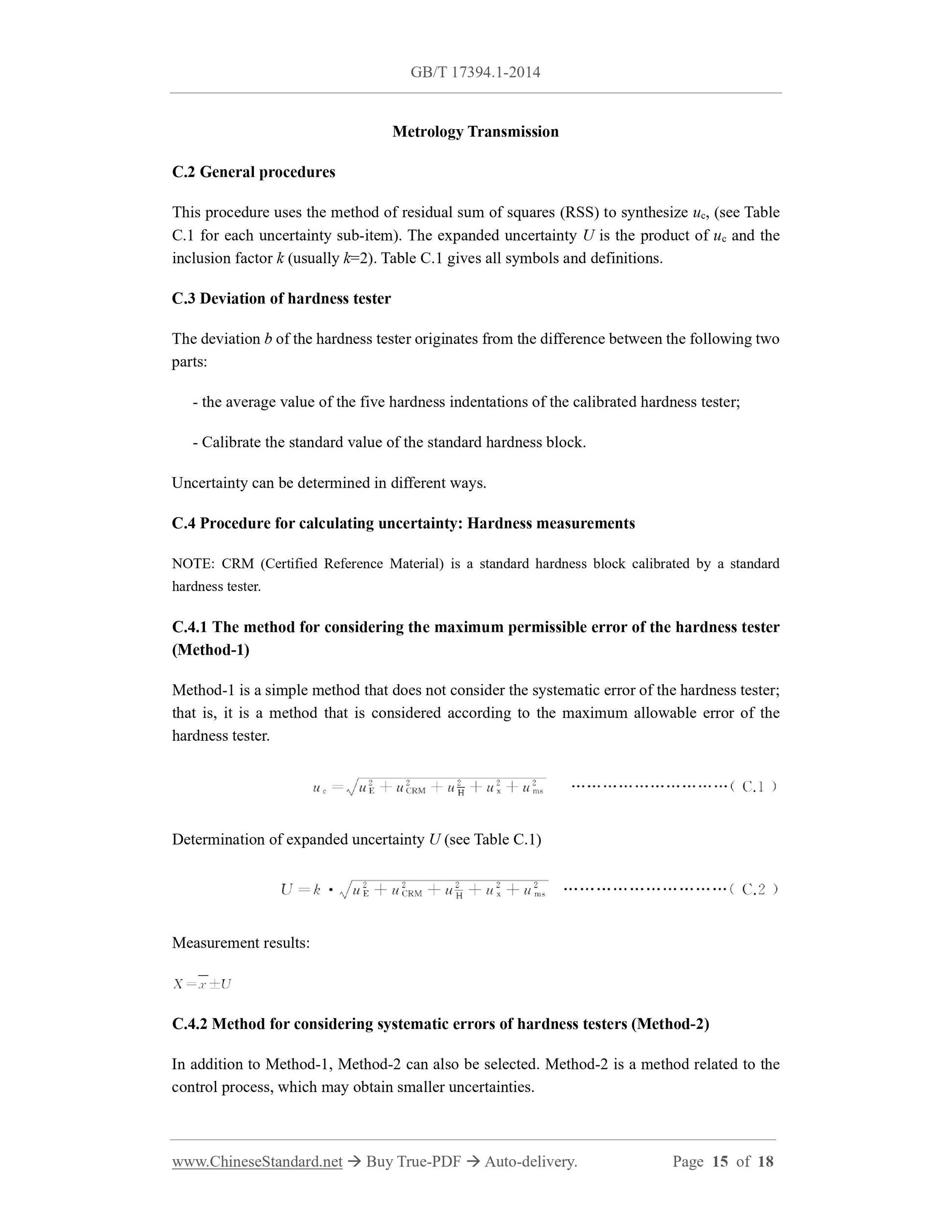1
/
of
7
www.ChineseStandard.us -- Field Test Asia Pte. Ltd.
GB/T 17394.1-2014 English PDF (GB/T17394.1-2014)
GB/T 17394.1-2014 English PDF (GB/T17394.1-2014)
Regular price
$215.00
Regular price
Sale price
$215.00
Unit price
/
per
Shipping calculated at checkout.
Couldn't load pickup availability
GB/T 17394.1-2014: Metallic materials - Leeb hardness test - Part 1: Test method
Delivery: 9 seconds. Download (and Email) true-PDF + Invoice.Get Quotation: Click GB/T 17394.1-2014 (Self-service in 1-minute)
Newer / historical versions: GB/T 17394.1-2014
Preview True-PDF
Scope
This Part of GB/T 17394 specifies the test principle, test instruments, specimen, test procedure,measurement uncertainty of test results, test report for determining the Leeb hardness of
metallic materials by using hardness testers equipped with D, DC, S, E, D+15, DL, C and G
impact devices.
This Part applies to Leeb hardness testers equipped with D, DC, S, E, D+15, DL, C and G
impact devices; see Table 1.
Basic Data
| Standard ID | GB/T 17394.1-2014 (GB/T17394.1-2014) |
| Description (Translated English) | Metallic materials - Leeb hardness test - Part 1: Test method |
| Sector / Industry | National Standard (Recommended) |
| Classification of Chinese Standard | H22 |
| Classification of International Standard | 77.040.10 |
| Word Count Estimation | 14,159 |
| Date of Issue | 12/5/2014 |
| Date of Implementation | 9/1/2015 |
| Older Standard (superseded by this standard) | GB/T 17394-1998 |
| Quoted Standard | GB/T 17394.2; GB/T 17394.3; GB/T 17394.4 |
| Regulation (derived from) | Announcement of Newly Approved National Standards 2014 No. 27 |
| Issuing agency(ies) | General Administration of Quality Supervision, Inspection and Quarantine of the People's Republic of China, Standardization Administration of the People's Republic of China |
| Summary | This Standard specifies Test principle to metallic materials in Leeb hardness testing instruments, samples, test procedures use with D, DC, S, E, D + 15, DL, C and G-type impact device durometer measurement uncertainty, the test report test results. This |
Share
